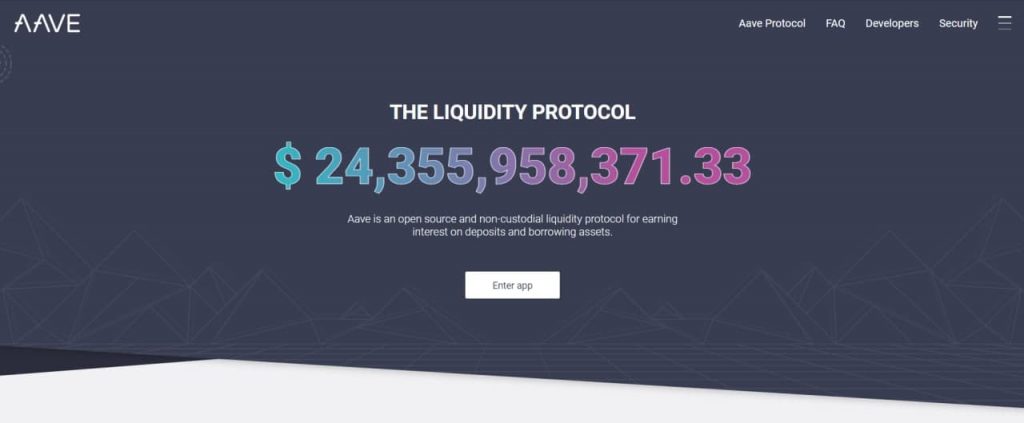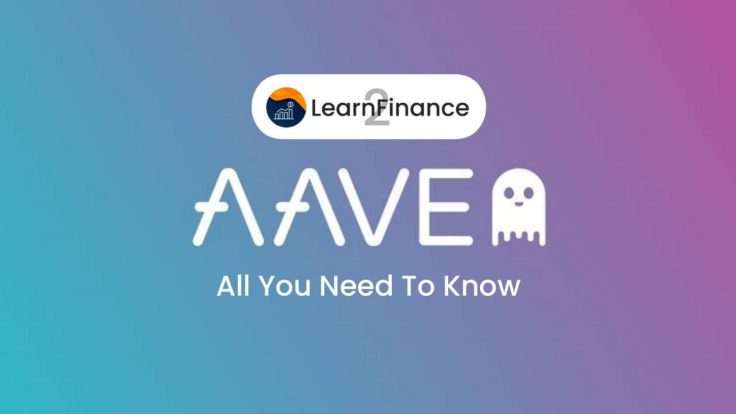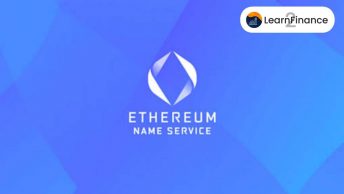The DeFi protocol Aave is one of the largest cryptocurrency lenders, and its AAVE token has a greater market valuation than competitors Maker or Compound. This is how it works.
In summary
Aave is a decentralised lending protocol that allows users to lend and borrow bitcoin without the requirement of a centralised middleman.
Users deposit digital assets into “liquidity pools,” which are then converted into monies that the protocol may lend out.
What exactly is Aave?
Aave is a decentralised finance (DeFi) technology that allows users to lend and borrow cryptocurrencies without using a centralised middleman. They gain interest when they lend, and they pay interest when they borrow.
Aave is developed on top of the Ethereum blockchain. All tokens on the network, known as ERC20 tokens, use the Ethereum blockchain to perform transactions.
The protocol itself makes use of a DAO, or decentralised autonomous organisation. That is, it is run and governed by the individuals who own — and vote with — AAVE tokens.
On Aave, how does loan work?
Traditionally, you’d have to go to a bank or other financial institution with a lot of liquid cash to secure a loan. In exchange for the loan, the bank will need collateral—in the instance of a vehicle loan, the automobile title itself. The principle, plus interest, is subsequently paid to the bank on a monthly basis.
DeFi is unique. There isn’t one. Instead, smart contracts (computer instructions that automate transactions like selling if the price of a token hits a specific level) perform the hard work. DeFi eliminates the need for middlemen in asset trading, futures contracts, and savings accounts.
In effect, this implies that you may acquire a loan in bitcoin from individuals rather than financial organisations. However, you must still put up collateral. Other cryptocurrency tokens are acceptable in a DeFi system that strives to be fiat-free.
Furthermore, because bitcoin is so volatile, DeFi systems necessitate overcollateralization. So, for a $500 crypto loan on Aave, you’d have to put up more than $500 in another coin. If the market falls and your collateral no longer supports the amount borrowed, your collateral can be liquidated, which means the protocol will use it to satisfy the cost of your loan.
Aave presently supports over 20 Ethereum-based assets, including the stablecoins Tether, DAI, USD Coin, and Gemini dollar. Chainlink, Basic Attention Token, and Uniswap are some of the other marketplaces.

What is the point of borrowing cryptocurrency?
Although it is usually more advantageous to purchase or sell cryptocurrency, borrowing it might be useful in some situations. One of the most apparent use is for arbitrage. If you find a token trading at various prices on several exchanges, you may profit by purchasing it one place and selling it elsewhere.
However, because the differences are usually tiny after accounting for transaction fees and spreads, you’d need a lot of the cryptocurrency to make a meaningful profit.
This is when Aave’s rapid loans come in handy. Aave pioneered the usage of flash loans, in which customers borrow cryptocurrency without providing collateral, use it to purchase an item, sell that product, and then refund the original amount in the same transaction while pocketing their profit.
How do liquidity pools function?
Let’s return to DeFi. If you wanted to borrow an asset in the early days of decentralised finance, you had to locate someone on the network willing to lend it to you at a price and terms you both agreed on.
Since then, things have changed.
Aave foregoes the entire peer-to-peer lending procedure in favour of what amounts to pool-to-peer lending.
This is how it works: Users place their digital assets in “liquidity pools.” These are converted into funds that the protocol may then lend out. Anyone who deposits their tokens into a pool and therefore “provides liquidity” is rewarded with fresh aTokens. (The letter “a” stands for “Aave.”) As a result, if you put DAI into the liquidity pool, you will receive aDAI in exchange.
As an aToken holder, you will receive a portion of the platform’s flash loans as well as interest on your aTokens. You won’t make much money if you deposit tokens into a pool that already has a lot of excess liquidity. However, if you deposit tokens that the system really needs, you will make more.
Borrowers face the same issue—interest rates change based on the amount borrowed.
Read More About DeFi
Why isn’t everyone doing it?
There are several causes for this. To begin utilising the site, you must first deposit bitcoin into Aave; you cannot buy it with a credit or debit card. (In addition, because Ethereum transaction costs are expensive, some individuals are afraid to shift smaller sums.)
Second, there is some risk involved, and liquidations are an important part of how Aave manages debt and ensures that customers can still access loans.
If there is still insufficient cash once the collateral is liquidated, Aave contains a failsafe mechanism called as the Safety Module. This pool contains AAVE tokens that users have placed. If everything is in order, they will be compensated with extra AAVE. If the system need capital, the AAVE tokens will be liquidated.
If there is still insufficient cash once the collateral is liquidated, Aave contains a failsafe mechanism called as the Safety Module. This pool contains AAVE tokens that users have placed. If everything is in order, they will be compensated with extra AAVE. If the system need capital, the AAVE tokens will be liquidated.
Aave can be traded or purchased on a several of cryptocurrency exchanges, including Binance and Huobi Global.








